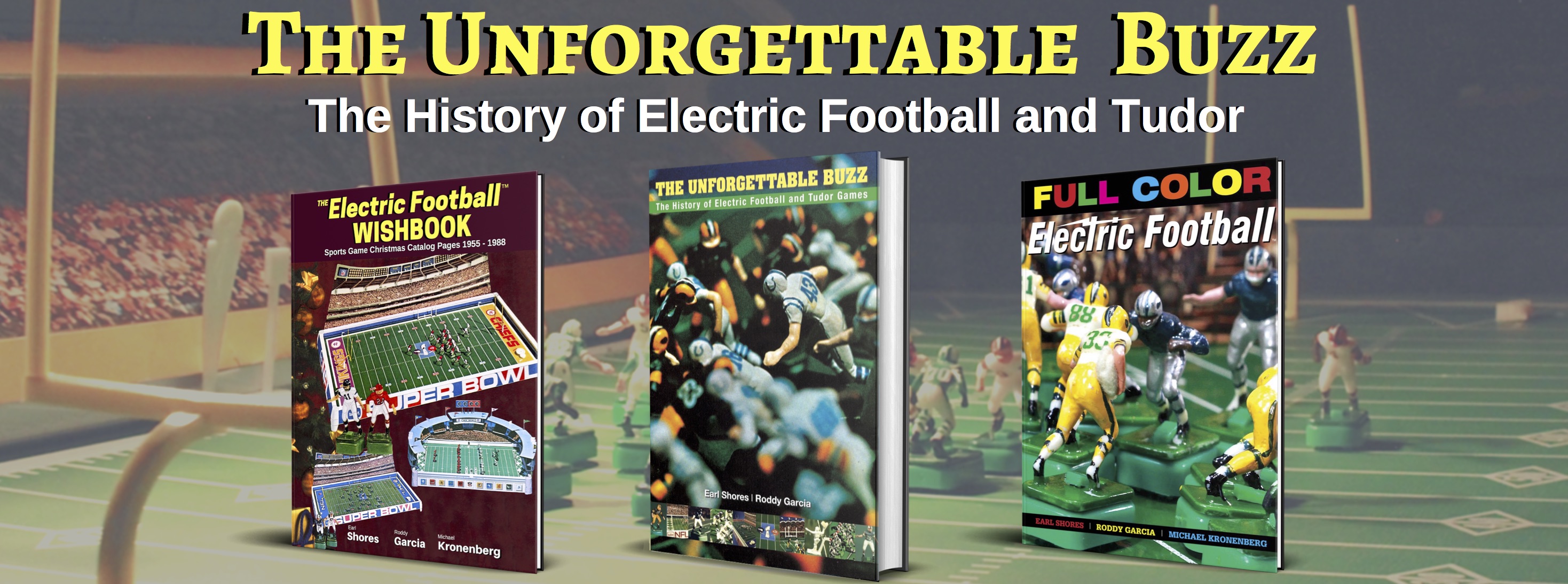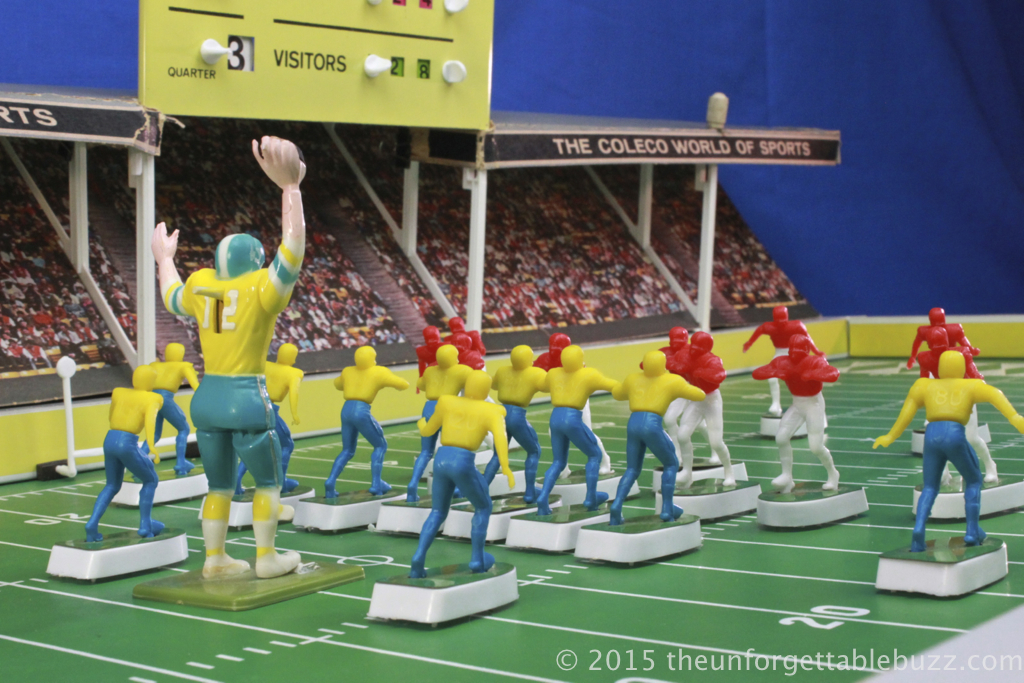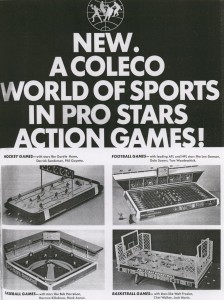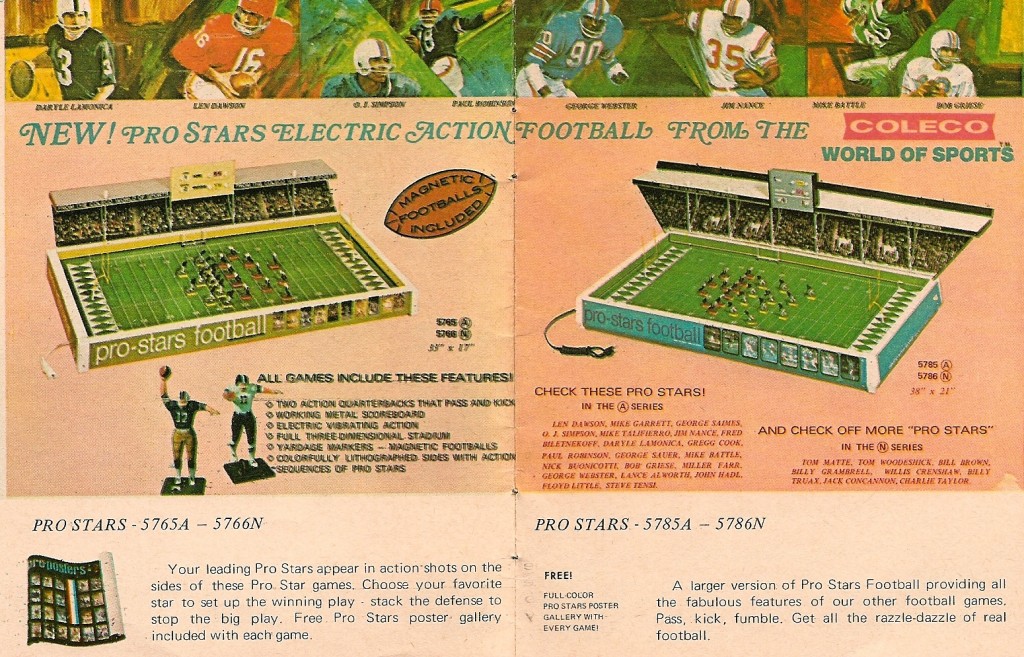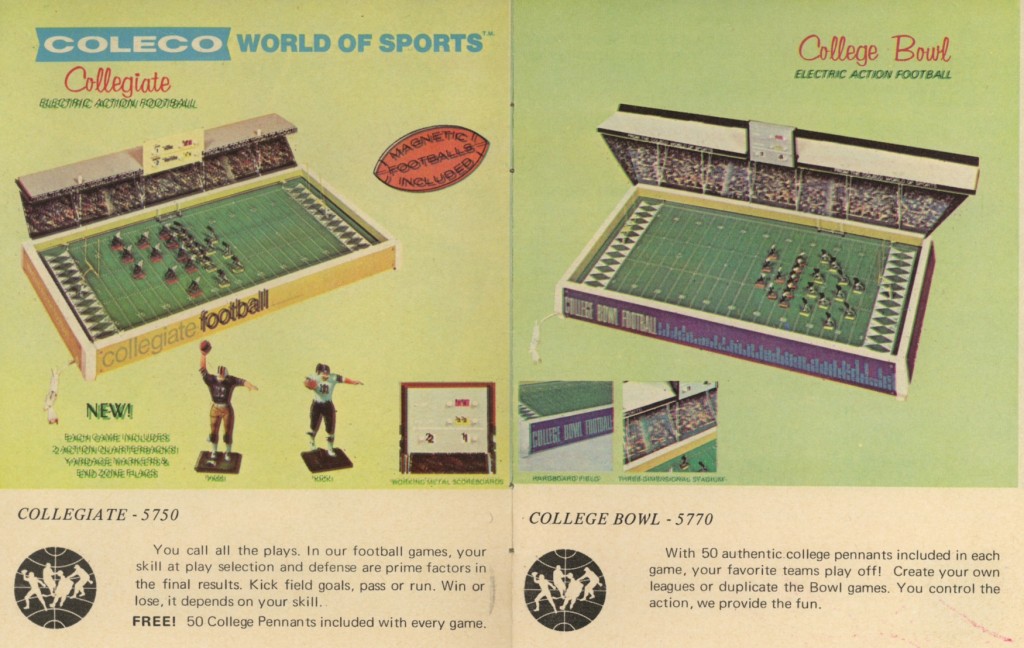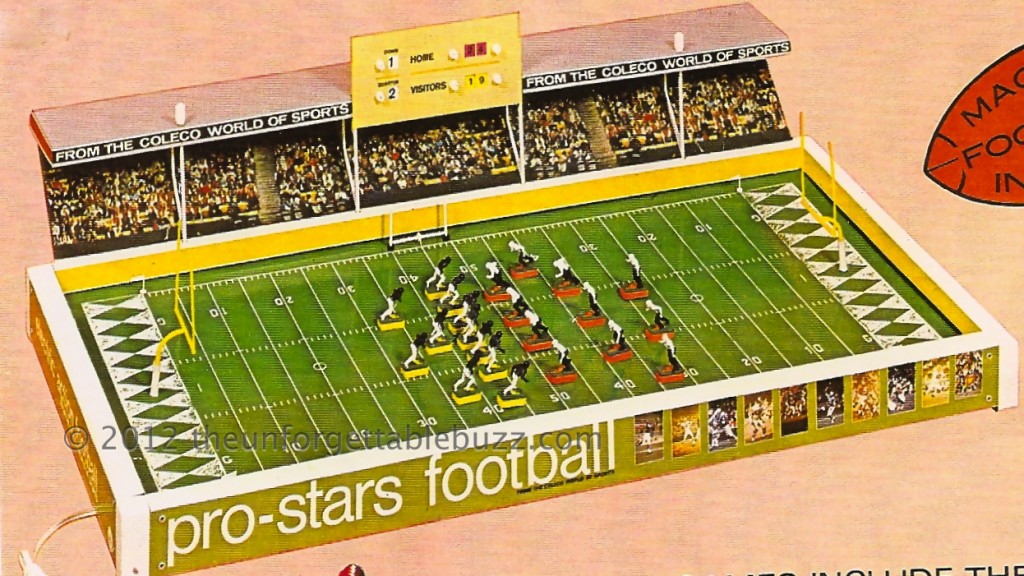It was 45 years ago this spring that Electric Football’s third manufacturer stepped onto the vibrating gridiron. That company was Coleco Industries of Hartford, Connecticut.
Coleco’s path to Electric Football began in late 1968, when they purchased Canadian toy maker Eagle Toys. This acquisition gave Coleco a large share of the table hockey market, as well as the ability to create and mass-produce sports games. After a year of prototypes and planning, Coleco launched its all new “World of Sports” at the 1970 Toy Fair in New York City.
In addition to Electric Football games, this new Coleco “world” included hockey, baseball, and basketball games. Coleco was also promising a promotional push that featured television spots, as well as ads in stadium programs and Sports Illustrated.
Coleco had six different Electric Football models at the 1970 Toy Fair. The Pro Stars line consisted of a large game and small game, both of which were available in American Conference or National Conference versions. Then there was Coleco’s innovative College line, consisting of the Collegiate game and the smaller College Bowl game (there are questions as to whether this line was ever actually produced).
Toy trade ads promoting the World of Sports had appeared months before Toy Fair opened. Coleco was a major toy company — in fact, they were the world’s largest manufacturer of above ground swimming pools. So they weren’t fooling around with their entry into sports games. As a large company with a lot of “leverage” in the toy world — any retailer who carried Coleco’s very popular swimming pools would now be “asked” to also carry the World of Sports — Coleco felt it would just be a matter of time before they would be the top player in Electric Football.
The lack of regard Coleco had for Tudor could be seen in Coleco’s promotional material — posed on their Football games were thinly disguised Tudor players. Coleco also “borrowed” Tudor’s goal post and first down marker to fill out the details of their games. And finally, Coleco thought nothing of using Tudor’s players for their 1970 television commercial.
Even though Coleco’s vision of Electric Football conquest never came to fruition, the company’s debut into Electric Football in 1970 did alter the course of the game. It forced Tudor to be more competitive (see Command Control), and thanks to its heft in the toy world, Coleco ended up playing a large part in the demise of both Gotham and Munro Games.
Coleco’s own demise came in the late 1980’s, about a decade after it stepped away from Electric Football for the thrill of computer and hand-held electronic games. But ultimately, Coleco left us with some very nice games that have proven durable even 45 years out. Their fiberboard fields still vibrate and play well, not seeming to warp and bubble as readily as Gotham’s fields do. (The plastic grandstand supports, unfortunately, are another matter entirely.)
And based on our conversations at TudorCON 14, Coleco games are fondly remembered. They still have a significant amount of admirers despite never having any official NFL affiliation. Most us seemed to have quickly figured out that Tudor NFL teams looked good and performed well on Coleco games.
There are many more details about the Coleco in The Unforgettable Buzz. There’s no doubt that the company played a major role in the story of Electric Football.
Earl & Roddy
